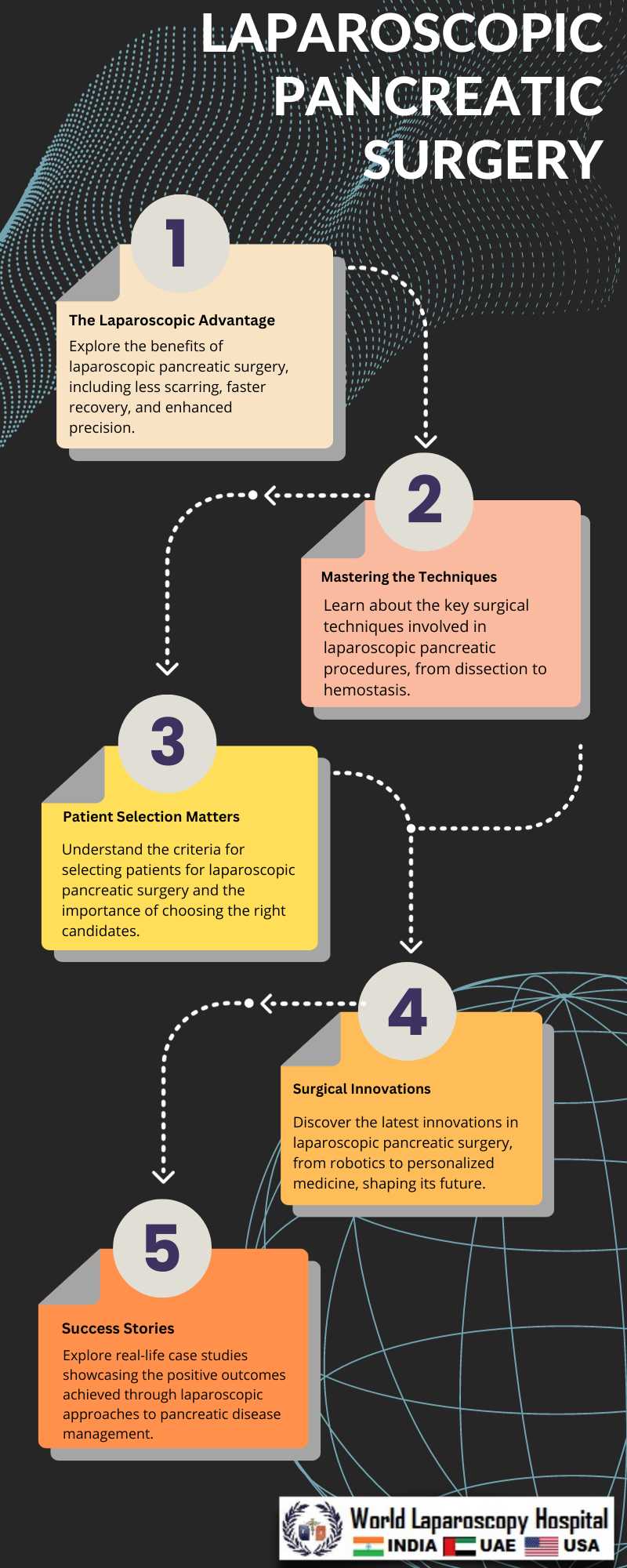Pancreatic disease presents a complex set of challenges for surgeons, requiring precision, skill, and innovation to achieve the best outcomes for patients. In recent years, laparoscopic approaches to pancreatic disease have gained prominence, offering less invasive options with potentially shorter recovery times. In this article, we will delve into the world of laparoscopic pancreatic surgery, exploring its evolution, techniques, benefits, and challenges from a surgeon's perspective.

I. Evolution of Laparoscopic Pancreatic Surgery
Laparoscopic pancreatic surgery has come a long way since its inception. This section will discuss the historical development of laparoscopic techniques in pancreatic surgery, highlighting key milestones and breakthroughs.
A. Early Attempts and Challenges
1. Pioneering surgeons in laparoscopy
2. Initial challenges and limitations
B. Advancements in Instrumentation
1. Introduction of specialized laparoscopic instruments
2. Robotic-assisted laparoscopic surgery
C. Learning Curve and Training
1. Surgical training and skill acquisition
2. Accredited programs and fellowships
II. Laparoscopic Pancreatic Procedures
This section will provide an in-depth overview of various laparoscopic procedures used in the treatment of pancreatic diseases. Each procedure will be explained, along with its indications and potential advantages.
A. Laparoscopic Distal Pancreatectomy
1. Patient selection and preoperative evaluation
2. Surgical technique and key steps
3. Postoperative care and outcomes
B. Laparoscopic Whipple Procedure
1. Complexities and challenges
2. Surgical approach and innovations
3. Postoperative management and results
C. Laparoscopic Drainage Procedures
1. Pseudocyst drainage and cystogastrostomy
2. Benefits and limitations
III. Benefits of Laparoscopic Pancreatic Surgery
Laparoscopic approaches offer several potential advantages for both patients and surgeons. This section will explore the benefits associated with laparoscopic pancreatic surgery.
A. Minimally Invasive Nature
1. Reduced pain and scarring
2. Faster recovery and shorter hospital stays
B. Improved Visualization
1. High-definition laparoscopy
2. Enhanced precision and control
C. Reduced Complications
1. Lower infection rates
2. Decreased risk of hernias and wound complications
IV. Challenges and Considerations
While laparoscopic approaches hold promise, they are not without challenges. This section will discuss the complexities and considerations that surgeons face when performing laparoscopic pancreatic surgery.
A. Patient Selection
1. Criteria for laparoscopic candidacy
2. Contraindications and high-risk patients
B. Technical Challenges
1. Tissue handling and dissection
2. Bleeding control and hemostasis
C. Learning Curve
1. Overcoming the challenges of skill acquisition
2. Case selection during the learning phase
V. Case Studies and Surgical Outcomes
This section will present real-life case studies and surgical outcomes to illustrate the effectiveness of laparoscopic approaches in pancreatic disease management. Each case will highlight the patient's condition, the chosen laparoscopic procedure, and postoperative results.
VI. Future Trends and Innovations
Laparoscopic pancreatic surgery continues to evolve with ongoing research and technological advancements. In this section, we will explore emerging trends and innovations that are shaping the future of this field.
A. Robotics and Artificial Intelligence
1. Robotic-assisted pancreatic surgery
2. AI-driven decision support systems
B. Personalized Medicine
1. Tailoring treatment to individual patient characteristics
2. Genetic markers and predictive analytics
C. Hybrid Approaches
1. Combining laparoscopy with other minimally invasive techniques
2. Advantages and challenges
Conclusion:
Laparoscopic approaches to pancreatic disease have revolutionized the field of surgery, offering patients less invasive options with potentially better outcomes. As surgeons continue to refine their skills and embrace emerging technologies, the future of laparoscopic pancreatic surgery looks promising. By sharing insights from a surgeon's perspective, this article has shed light on the evolution, techniques, benefits, challenges, and future trends of this dynamic field, ultimately aiming to improve the care and well-being of patients with pancreatic disease.